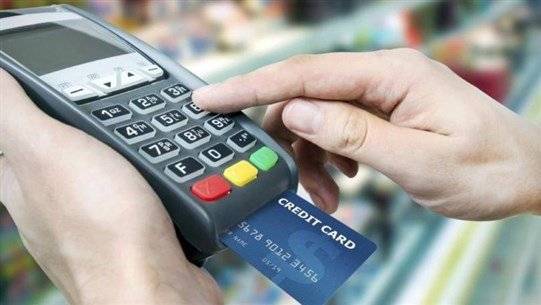The circular issued by the "central bank" yesterday, aimed at encouraging the use of locally issued fresh dollar payment cards, might seem like interpreting water after going through the effort of water. The circular stated that “all fresh dollar cards will become accepted by all merchants in Lebanon, starting from July 25, without any amendment to the commissions. Payment settlements for fresh dollar cards will be processed through banks' foreign accounts via Visa and Mastercard, allowing merchants to receive all payments made by fresh dollar cards in full and as fresh dollars.”
For those unfamiliar with the Lebanese “inventions” to develop exchange rate theories and unaware of how banks cheat customers, this circular seems unimpressive. It’s obvious that merchants would accept payments from customers using cards containing fresh dollars and subsequently withdraw these funds in cash from the bank. However, this was not happening – banks were returning the accumulated dollar funds in merchants' accounts from sales via local fresh cards in Lebanese pounds at the “Sayrafa” exchange rate, according to financial advisor Dr. Ghassan Shamas. This resulted in merchants losing a percentage on every hundred dollars, equating to the difference between the Sayrafa rate and the free market rate.
Consequently, merchants had two options: either completely stop accepting local fresh dollar payment cards and rely on cash sales in dollars or Lebanese pounds according to the parallel market rate, or add a commission to card transactions equivalent to the difference between Sayrafa and the market rate, amounting to between 13 and 15 percent. This means that an item priced at 100 dollars would be charged at 115 dollars if paid with a card. Meanwhile, banks that paid merchants in Lebanese pounds at the Sayrafa rate were selling dollars to the Central Bank at the free market rate, profiting from the difference.
“This is what the circular sought to put an end to,” Shamas says, emphasizing that merchants will now receive everything they collect through locally issued fresh dollar payment cards in full and as fresh dollars. Therefore, merchants no longer have any justification for refusing local fresh dollar bank cards or for charging illegal commissions on them, which helps limit the cash economy and reduces both individual and commercial demand for Sayrafa.
Consumers will no longer be forced to withdraw their dollars and exchange them directly at the bank through Sayrafa or with money changers to complete purchases. Likewise, merchants will no longer need to convert the payments they receive in pounds into dollars in the same way. This allows merchants to accept cash payments from customers in dollars without navigating the currency market, which the central bank believes will contribute to stimulating the economy.
Regarding foreign payment cards, there is no issue, as banks also settle in cash dollars for merchants instead of payments through these cards, while obtaining dollars from correspondent banks using traditional methods. The circular did not forget to mention that "cash withdrawals through lollar cards at ATMs will continue under circular 151 without any changes." This means that withdrawals from accounts "hijacked" are no longer valid for payments at POS (POINT OF SALE) and are only used for withdrawing dollar deposits at an exchange rate of 8,000 pounds, with a monthly quota depending on account size, which varies from one bank to another.




